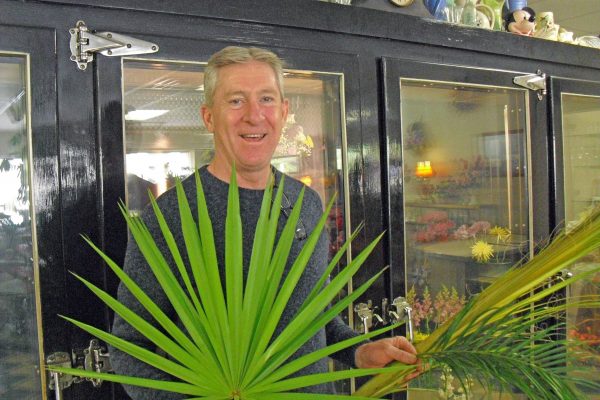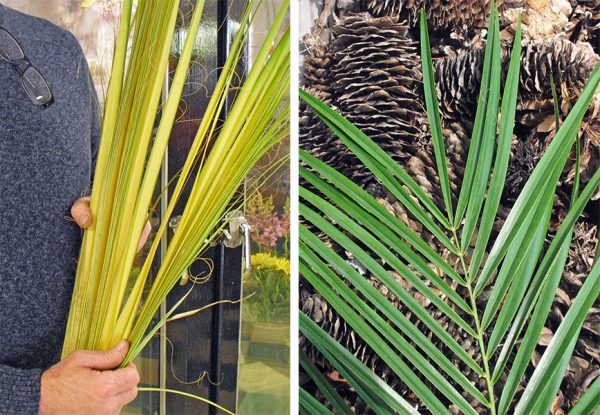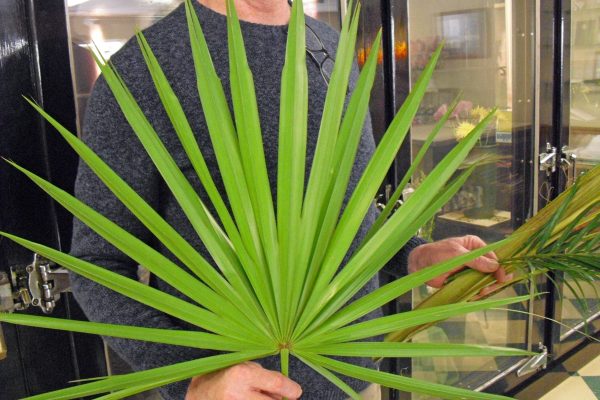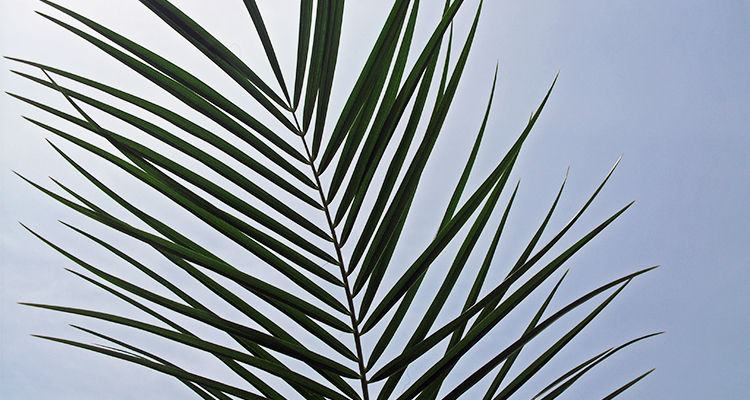Editor’s note: In a continuing series on how the Ohio Valley expresses its spirituality, today’s post is the story behind area churches’ celebration of the start to the Christian Holy Week. Palm Sunday commemorates the day when Jesus entered Jerusalem to a kingly reception, with crowds thr owing palm branches and their own outerwear onto the road in front of him. A few days later, Jesus was executed in the same city.
owing palm branches and their own outerwear onto the road in front of him. A few days later, Jesus was executed in the same city.
But, he’s done it. And, given the fact he’s fourth-generation operator of Laupp Florists LLC, it’s hard telling what other kinds of Easter-time weather extremes have been experienced in the last 170 years or so.
“We like our customers,” Gessler said with a grin. At the company’s Eoff Street quarters, he and other Laupp florists were gearing up as of Thursday to supply palm leaves ranging from spiky to tendril-laden to feathery to churches across the city.

Some palms were standing in water, like cut flowers. Others were stored dry in a cooler whose custom-made expanse dates back to 1936, when Laupp Florist was on Chapline Street. (It has also been located on Market Street and on Wheeling Island at points in its history.)
“The movers wanted $38,000!” Gessler said in an aside concerning the coolers. “Me, my brother and a friend took them apart and carried them down the street piece by piece.”
BRANCHING OUT
Back to the palms, thick clusters of long, thin leaves — those stored dry in the cooler — were mostly headed for Roman Catholic parishes. Gessler, himself a Catholic, said large congregations tend to favor this variety, which can be split into many pieces.
“A lot of people take more than one,” sometimes to shut-ins, he said. He noted area tradition has long been to tuck the palms under mattresses, behind the corner of a picture of Jesus or onto a mantle as a household blessing. Dried palms are later burned for Ash Wednesday observances in the next winter’s Lenten launch.
The linear palms can also be shaped into crosses or braided into elaborate patterns, although he doesn’t see much of that done anymore. This saddens him. For a time, Laupp made and sold palm crosses, but customers were unwilling to pay for the cost of labor, and he gave this up.
Other things about Palm Sunday have changed over the years, as well. Laupp used to sell quite a few potted palms. Now, they are only available by special order and are rarely requested. More often purchased are lilies, hydrangeas and tulips, which he gets from a Wheeling grower.
Even the species of palm have changed over time.
The hot new palm among city Protestants is the robellini, a Florida-supplied specimen that is deep green, soft to the touch and doesn’t have the structural weakness he’d noticed in recent years among emerald palms. He was throwing away so many of the latter, he switched to the robellini for all soft-palm purposes five years ago.

A final species sold by Laupp Florist — the impressive, fan-like saw palmetto — is generally reserved for altar displays.
“I only do these for two churches,” Gessler said, shuddering at the idea of one falling into the hands of young congregants who like to swing things around. “You’ve got to be careful with it. It’s pointy, and it’s sharp.”

Gessler also has area pastors’ backs in another way. Given the relatively low cost of palms (compared to roses, for example), he orders plenty.
“We just had one come in,” he said of an area pastor who realized he’d neglected to order his supply until the last minute. Gessler chuckled and said he had already purchased that church’s usual in anticipation. “We can handle them all.”
• A long-time journalist, Nora Edinger also blogs at noraedinger.com and Facebook and writes books. Her Christian chick lit and faith-related non-fiction are available on Amazon. She lives in Wheeling, where she is part of a three-generation, two-species household.


